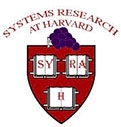We have demonstrated that network coordinates in the wild do behave somewhat differently than do tame coordinates on PlanetLab or in simulation. Fortunately, even these wild coordinates can be tamed. Our analysis of a large, Internet-scale coordinate system has convinced us to join the network coordinate supporters camp. While the initial network coordinate implementation illustrated some of the problems that critics often cite, we found that simple, but effective techniques overcame nearly all these issues. In Azureus, network coordinates provide a simple and efficient mechanism for anycast, as part of DHT lookups, and may soon be used to optimize streaming media. In addition to providing a wealth of data and analysis from a live, large-scale deployment, we have deployed and evaluated six techniques that improve the accuracy and/or stability of network coordinate systems: latency filters, update filters, neighbor decay, coordinate memory, gravity, and violator exclusion. Together, these yield efficient, accurate, and stable network coordinates in the million-node Azureus network. In the future, we plan to add the remaining techniques to the Azureus code and monitor their effectiveness.
Jonathan Ledlie 2007-02-23SYRAH Research Projects
- Network Coordinate Research at Harvard
- Network Coordinates
- Network Coordinates in the Wild
- 10 Acknowledgements
- 2.1 Vivaldi
- 3 Latencies in the Wild
- 3.1 Collection
- 3.2 Round Trip Times
- 3.3 Violations of the Triangle Inequality
- 3.4 Dimensionality
- 3.5 Intercontinental Latency Distributions
- 4 Taming Live Coordinate Systems
- 5 Measuring Coordinate Systems
- 6 Internet-Scale Network Coordinates
- 7 Barriers to Accuracy
- 8 Related Work
- 9 Conclusion
- About this document
- Background
- Bibliography
- Introduction
- Network-Aware Overlays with Network Coordinates
Copyright © 2024 The President and Fellows of Harvard College | Accessibility | Digital Accessibility | Report Copyright Infringement
